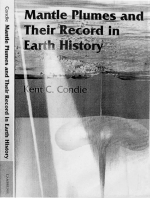Добрый день, Коллеги. Важное сообщение, просьба принять участие. Музей Ферсмана ищет помощь для реставрационных работ в помещении. Подробности по ссылке
Mantle plumes and their record in Earth history / Мантийные плюмы и их роль в истории Земли
Although plate tectonics and mantle plumes were introduced to geology at the same time in the 1960s and early 1970s by J. Tuzo Wilson and Jason Morgan, unlike plate tectonics, which rapidly collected supporters from the Earth S c i e n c e community, mantle plumes took a back seat. Yes, Hawaii was an example of a mantle plume and as oceanic plates moved over plumes they leave hotspot tracks. The prevailing attitude was one of "this is fine, but let's now move on to plate tectonics where the real excitement is." For twenty years geoscientists focussed most of their efforts on trying to understand plate tectonics and document examples of it in the g e o l o g i c record. It w a s not until the late 1980s that scientists turned some of their attention to mantle plumes, and indeed during the 1990s, when mantle plumes really "became of age", publications dealing with mantle plumes increased exponentially. Why the long period of dormancy for mantle plumes? I believe it was simply because geoscientists were overwhelmed by plate tectonics-a band wagon effect that influenced all of the Earth Sciences.
I think three things brought mantle plumes to the forefront in the nineties. First is high speed computers, which allowed scientists to numerically model mantle processes in reasonable amounts of time with increased accuracy. Models appeared for the production and ascent of mantle plumes, the effects of mantle phase transitions on plumes, and the interaction of plumes with both the continental and oceanic lithosphere. Of course, no matter how sophisticated, models are no better than the assumptions and boundary conditions that go into them. The first models were simple, focussing on Newtonian fluids as a n a l o g s for the mantle, with mantle plumes c o m i n g from boundary layers with strong thermal gradients. As it became clear that simplistic models were probably far from reality for the mantle, modeling advanced to non-Newtonian fluids, gradients in viscosity and density were included, and finally, we moved from two- to three-dimensional space. <...>




